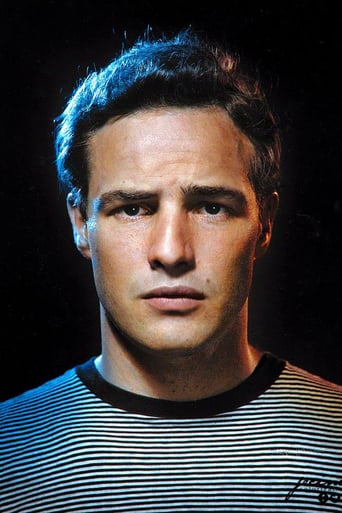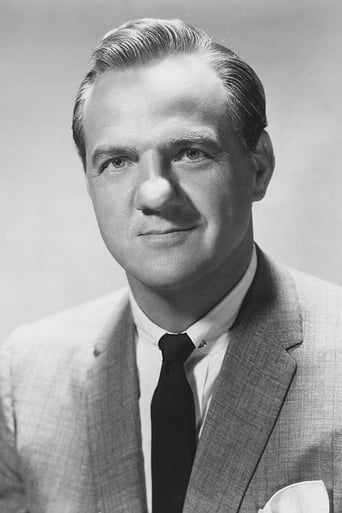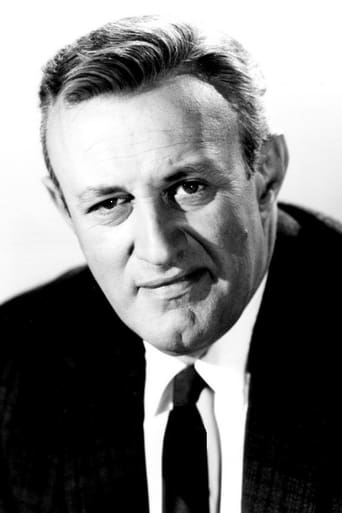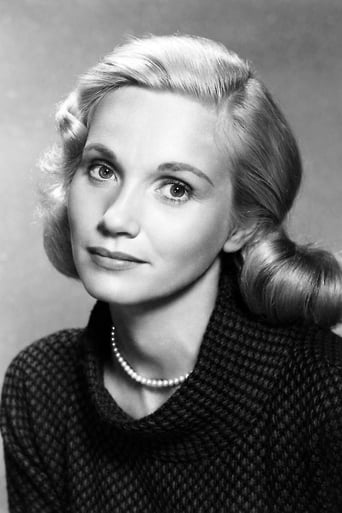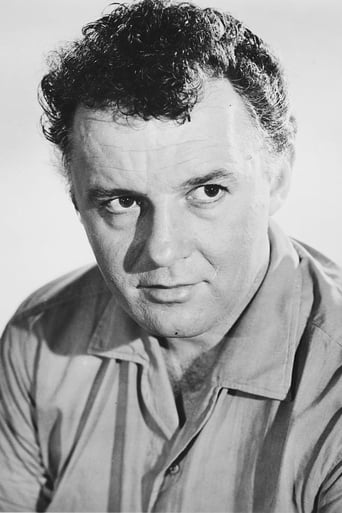lannjosh
This movie is excellent all the way through: with the cinematography to the acting. This film won best picture in 1954, which isn't surprising when you have Marlon Brando as the main star; he's best known decades later in The Godfather(1972). My only nitpicks with this film is that occasionally the music can be overly obnoxious and could be a struggle to hear what the people are saying. But, in a lot of cases the use of overly dramatic sounds can be in the movie's favor. This could be in the scene where Terry runs to see Edie; it's revealing something in the priest's point of view and you could hardly hear what they say at parts. That may be one of my favorite parts! Also, the end is well done and perfectly shot. Plus it has a lot of quotable lines like: "I coulda had class. I coulda been a contender. I coulda been somebody, instead of a bum, which is what I am, let's face it." When this personally isn't one of my all time favorite classics, it still is a masterpiece. I give this movie a: 9.6/10=10/10 overall
frankwiener
As difficult as it is to resist the temptation, I promised myself that I would write this review without using the famous "contendah" quote from the back of Nehemiah Persoff's cab--the one with the curious Venetian blinds in the back window. Let's see if I can actually follow through.When director Elia Kazan approached producer Darryl Zanuck with the idea for this movie, Zanuck replied, "Who's going to care about a bunch of sweaty longshoremen?". Having grown up during the 1950's and 60's in the Newark, New Jersey area, if someone were to suggest seeing a movie about an ex-prize fighter who stood up to union mobsters on the nearby, gritty waterfront of Hudson County, I would have probably politely declined the offer. Why would I need to pay for a ticket to watch a movie about an often disagreeable, prevailing culture that stifled my spirit from every direction since infancy? Both Zanuck and I could not have been more mistaken. Before you jump to any wrong conclusions, as I did initially, first check out the remarkable cast, an outstanding script by Bud Schulberg, excellent direction by Kazan, brilliant black and white camera work by Boris Kaufman on location in a brutal, bone chilling Hoboken of the 1950's, and an unusually nerve-racking score by Leonard Bernstein. Terry Malloy, the lead character played with both depth and strength by Marlon Brando in a performance that earned him a well deserved Oscar, is not just an ex-prize fighter. He is a complex human being who is tortured by a conflict between loyalty to the brother he loves and the highly influential organization that dominates every aspect of his local community, on one side, and the noble, instinctive urge to resist injustice and the tyrannical abuse of power on the other. As viewers, we become totally absorbed by his inner battle, thanks to the terrific script by Schulberg and the superb acting by Brando, as well as the entire cast.Terry develops a romantic relationship with Edie Doyle, played with a unique, quiet intensity by Eva Marie Sainte in a film debut that also earned her a justified Oscar. Edie is a very strong-willed, principled young woman who has been liberated from her rough and tumble surroundings by a "proper" college education in Westchester County, New York. She returns home during a school break only to find herself back in the inescapable grip of this cruel, urban prison. Regardless of how much her struggling, embittered longshoreman "Pop" (John Hamilton) sacrificed for her freedom, there would be no release from the jungle for Edie, at least not just yet, much to Pop's disappointment.Although Charley Malloy, played convincingly by Rod Steiger, repeatedly defends brother Terry against the suspicions of mob boss Johnny Friendly (is there a more ironic name in cinematic history?), portrayed very forcefully by Lee J. Cobb, Charley is possibly even more tormented by inner conflict than Terry is. Charley is the one who is actually "over his head" from his involvement with the waterfront mob, sucked into a life-draining trap from which there is no escape. Ms. Saint and Mr. Steiger, as fellow Newark natives, may have reached back to their own, personal backgrounds in order to shape their very credible characters. Karl Malden also stands out as the crusading, social activist priest, Father Barry, who, along with Edie, inspires Terry to rebel against overwhelming odds in order to do the right thing and to stand up for his deeply held convictions in the face of a formidable and extremely vicious adversary.This film powerfully depicts the classic battle between good and evil while illustrating and then gradually resolving an intense inner conflict that dwells deep within Terry Malloy, who must fight very hard to achieve his sense of human dignity against a brutal and seemingly insurmountable foe.See this one. It's a masterpiece.
PimpinAinttEasy
Dear Martin Scorsese, I watched your interview on the special features section of the On The Waterfront DVD. You did make some good points about how On the Waterfront was a pioneer in the way the streets of New York was filmed and looked on screen. You also stated that Brando's performance was unique and you had not seen anything like it before except for John Garfield in Force of Evil. But I was thinking about Sterling Hayden in The Asphalt Jungle. I am not comparing Sterling to Brando. But I was thinking about how both the characters were conflicted by the corruption around them, seemingly unable to escape their terrible circumstances. Brando exuded the lonesomeness and melancholy of the failed boxer trying to save his soul by standing up to the union boss who controls the livelihood of the longshoremen. I see parallels between Brando's performance in On the Waterfront and De Niro's in The Raging Bull. I also think Lee.J.Cobb's performance is seriously underrated. He upstaged Brando in some of their scenes together. Cobb's menacing certainty about his evil manipulative ways was a perfect foil for Brando's confusion. Their interactions were the best part of the film. I wish the writer had written more scenes with the two of them squaring off. I was not too impressed by the weepy Eva Marie Saint or the saintly Karl Malden. On the Waterfront tells a universal story. It is a very depressing film when you think about it. I can never forget the final scenes when Brando is being beaten up by the thugs and all the longshoremen simply crowd around and look on. The shots of them passively crowding around the brawling men like sheep was clearly used by Kazan to convey their impotence. Best Regards, Pimpin. (8/10)











